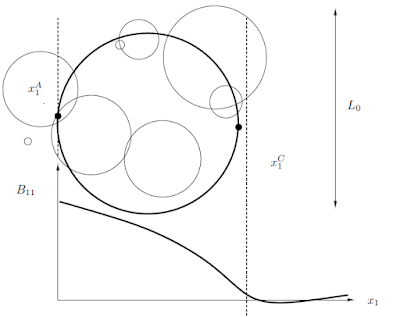KNOWLEDGE OF ENTROPY or ENTROPY OF KNOWLEDGE
OECD PISA (OECD Program for International Student Assessment), which is widely discussed in Turkey with the results of its exams defines scientific literacy as follows in its framework study [1] in 2015: "Scientific literate person evaluates evidence and data, scientifically. She/he behaves according to the scientifically explaining and questioning of a natural or technological event. Scientific literacy does not require being a scientist or an educator in any discipline. As stated in the definition, it requires being able to speak with the method of science, as a "conscious citizen". This is, of course, the main educational problem.
The most popular of these misuses is 'quantum', as most of us may have noticed. We realize that the quantum world, which is very distinct from our physically perceived world in scale, with its 'uncertainty', 'tunnel', and 'leap' is an 'entangled' (!) rumour in many subjects from popular culture to politics. Unfortunately, while a scientifically literate citizen should question such misuse, the assumption that speaking with this 'jargon' is scientific is settled.
There is another issue that the misuse of the terms, although not more common than the misuse of "quantum", prevents the establishment of basic scientific knowledge in a more destructive way: The Second Law of Thermodynamics! From the fact that life is finite, to the pain of death or the cure of this pain. Since the universe, which is an isolated system, will disappear one day, problems of existence, belief disputes are being discussed with high "entropy" (!), ranging from the arrow of time to the questioning of time. ‘No contradiction and misinformation in associating entropy with the dimension of life we perceive is being considered. But this is not 'Thermodynamics' or 'Thermodynamics' is not this!
JOURNEY OF CONCEPTS
Thermodynamics has its own definitions, as in every branch of science. The formation and use of these definitions are in mutual interaction with the development of that branch. For example; The word "energy" used for the first time in 1807 by Thomas Yong (1773-1829) does not refer to "heat". It means the elastic energy of a spring and the potential and kinetic energies of the mass at its end. Therefore; we may think that using steam power to extract coal underground did not owe anything to thermodynamics until the end of the 18th century [2]. Although in Francis Bacon's (1561-1626) book 'heat' sources are mentioned [3], we can say that thermodynamics began with Joseph Black's (1728-1799) definition of the concept of latent heat. Then James Watt separated the condenser from the piston-cylinder system of the steam engine (1769).
The idea of obtaining work from heat, later called the heat engine, was created by Carnot in 1824, as you know. And the concept of entropy, was by Clausius in 1854. The "working substance" in Carnot's famous booklet [4] can be accepted as the first reference to the concept of "system" in terms of thermodynamics.
'System' is a community of objects. The working fluid (water / steam) in the heat machine, the refrigerant in the refrigerator, the gas in the cylinder can be taken as a 'system'. In classical mechanics, 'system' is called closed in case it is "isolated" as if there is nothing other than itself [5].
'System' is an example of confusing the definitions in classical mechanics with the thermodynamic definitions while trying to explain the concept of entropy with the analogy established with daily life and non-thermodynamic fields. In thermodynamics, a closed system does not mean an "isolated" system. In terms of thermodynamics, "closed system" means a system that does not exchange mass with its environment. But work and heat exchange exist. In thermodynamics, the system that does not exchange mass, heat and work with its environment is called "isolated system". In other words, the "closed system" in classical mechanics is the "isolated" system in thermodynamics. Therefore, 'the entropy of a closed system increases with time' is a misrepresentation.
(See https://singsurf.org/sorites/tidying.php)
The entropy of a closed or open system can increase or decrease. But; with the change in entropy of a closed or open system, the sum of the change in the entropy of its environment during this interaction is always in the positive direction.
ARRANGEMENT and DISORDER
Figure 1 Distribution of molecules in a divided container
MAXWELL'S DAEMON
CONCLUSION
[1] http://www.oecd.org/callsfortenders/Annex%20IA_%20PISA%202015%20Science%20Framework%20.pdf
[2] Hall, A. R., Technology and Culture, Vol. 2, No: 4, (Autumn 1961), pp. 333-341.
[3] Müller, I, A History of Thermodynamics, The Doctrine of Energy and Entropy, Springer, Berlin, 2006.
[4] Müller I.'dan [3] aktarım: Carnot, S: [Reflections on the motive power of fire and on machines fitted to develop that power] à Paris chez Bachelier, Libraire. Quai des Augustin, No. 55 (1824). English translation by R.H. Thurston: ‘‘Reflections on the motive power of fire by Sadi Carnot and other papers on the second low of thermodynamics by É. Clapeyron and R. Clausius.” E. Mendoza (ed.) Dover Publ. New York (1960). pp. 1–59.
[5] Susskind, L., Hrabovky, G., Classical Mechanics, The Theoretical Minimum, Penguin Books, GB, 2013.






Comments
Post a Comment